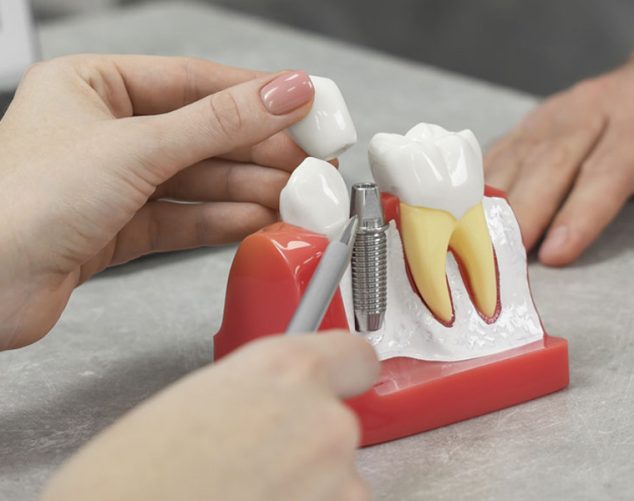
Single Tooth Implants: Procedure, Benefits, and Aftercare
Losing a tooth isn’t just about looks—it can change the way you eat, speak, and carry yourself. Thankfully, the latest dentistry offers a smart and lasting solution. Single-tooth implants restore strength, function, and comfort without compromising the health of nearby teeth. As you weigh your treatment choices, this easy-to-follow, detailed guide empowers you to make a well-informed, confident decision for a healthier, more radiant smile.
What Is a Single Tooth Implant?
A single-tooth implant replaces a single missing tooth. It uses a titanium post that is inserted into the jawbone, acting as a root. A custom crown sits on top, made to match your natural teeth in structure and colour.
Unlike dentures or bridges, implants don’t rely on surrounding teeth. They hold their own place. Over time, the post fuses with your bone, giving strong support and stability.
Think of it as a lasting fix that blends in so well, most people won’t even know it’s there.
Who Is a Good Candidate for a Single Tooth Implant?
Not everyone is an ideal fit right away, but many people are eligible after a quick evaluation. Here’s what makes someone a good candidate:
- Healthy gums with no signs of infection
- A fully developed jawbone
- One or more missing teeth in an otherwise healthy mouth
- Good overall health with no chronic conditions that delay healing
- A non-smoker, or someone willing to stop during the healing period
Your dentist in Brampton will also check your jawbone density using X-rays or 3D scans. If the dental bone is too thin, a bone graft might be needed before starting the implant process.
Step-by-Step Single Tooth Implant Procedure
Here’s how the process typically works. It doesn’t happen all at once, but every step gets you closer to a complete smile:
- Initial Consultation
You’ll meet with the dental team for a full mouth exam. They’ll review your dental and health history and discuss your goals.
- Planning and Imaging
X-rays and scans help map bones and nerves. A treatment plan is tailored just for you.
- Implant Placement
The titanium post is surgically inserted into the jawbone. It takes about an hour and is usually done with local anesthesia.
- Healing Phase (Osseointegration)
This part takes the longest. Over 3 to 6 months, your bone grows around the dental implant and locks it in place.
- Abutment Placement
Once the implant is stable, a small connector called an abutment is added.
- Crown Placement
A custom-made crown goes on top of the abutment. It looks and works like your natural tooth.
Benefits of a Single Tooth Implant
There’s a reason implants are often called the gold standard in tooth replacement. They do more than just fill a gap.
- Looks Natural: The crown matches the colour, shape, and size of your other teeth.
- Feels Real: Because it’s anchored in the bone, it doesn’t shift or slide.
- Preserves Jawbone: The implant keeps the bone from shrinking, which happens when a tooth is missing.
- Protects Other Teeth: No need to grind down healthy teeth for a bridge.
- Built to Last: With the right care, an implant can last for decades.
People looking for dental implants near you often find these benefits reason enough to choose implants over bridges or dentures.
Potential Risks and Considerations
Every procedure has risks, and while dental implants have a high success rate, it’s still important to be informed.
- Infection at the implant site
- Nerve damage that can cause tingling or pain (though rare)
- Sinus problems if the implant enters a sinus cavity (upper jaw)
- Implant failure occurs if the bone doesn’t fuse properly or due to gum disease
Choosing a skilled provider can help avoid these problems. Make sure to follow all care instructions and attend follow-up visits.
Aftercare Instructions and Maintenance Tips
Caring for your implant is a lot like caring for your natural teeth. But during healing, you’ll need a little extra attention.
Right After Surgery:
- Use cold compresses to reduce swelling.
- Eat soft foods—soups, yogurt, mashed potatoes—for a few days.
- Gently keep the surrounding area clean, but skip brushing right over the implant for the first few days.
- Skip the smoking and alcohol; both slow healing.
Long-Term Care:
- Brush twice daily using a soft-bristle toothbrush.
- Floss every day—implant floss or water flossers work well.
- Visit your dentist every six months for checkups and professional cleanings.
- Avoid biting into very hard items like ice or pencils.
Good hygiene helps your implant stay strong and keeps your gums healthy.
How Long Does a Single Tooth Implant Last?
Here’s the good news: implants can last a lifetime.
The crown, however, may need replacement every 10–15 years, depending on wear. It’s important to:
- Stick with regular checkups
- Avoid chewing on hard or sticky foods
- Maintain strong oral hygiene habits.
People who care for their implant properly often enjoy a reliable, long-term solution with minimal issues. That’s why those seeking dental implants in Brampton often prefer this lasting option over short-term fixes.
Final Thoughts
Don’t let a missing tooth hold you back. A single tooth implant can restore more than just your smile—it brings back comfort, confidence, and ease. Ready to take the next step? Book your consultation with Royal West Dentistry today and discover a personalized approach to lasting dental care. Your complete, healthy smile starts with one simple decision.